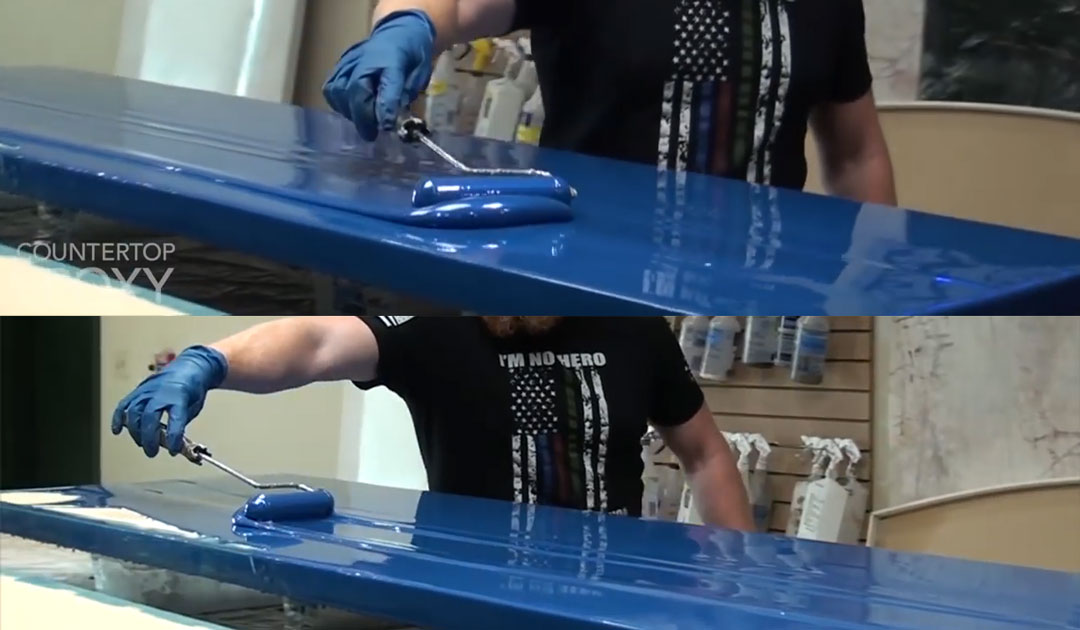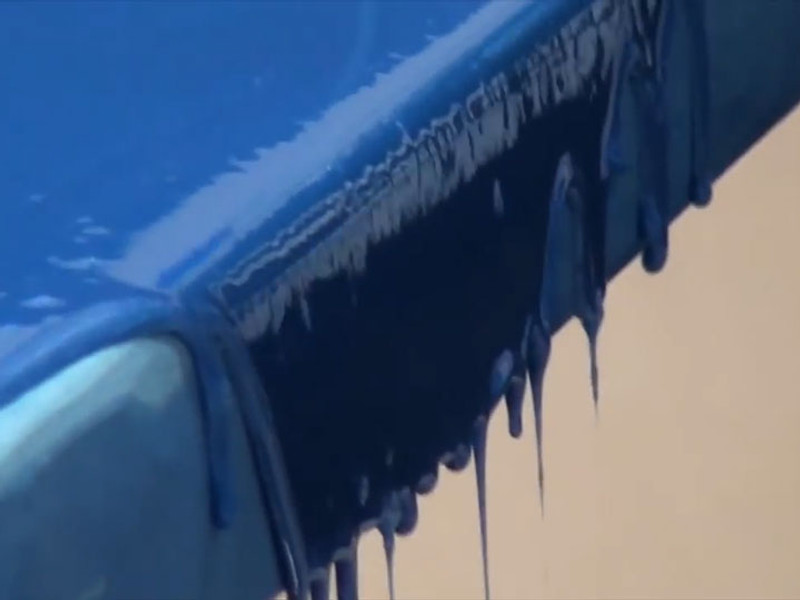Are you finding yourself with uneven epoxy vertical edges? Can’t seem to efficiently spread out the product on your countertop surface? When it comes to epoxy application, your technique and vertical surface tension should be one of your main focuses, and is vital in attaining that perfect, flawless finish for your epoxy countertop.
Watch corresponding Video for this blog Below.
Vertical Surface Tension?
First let’s briefly explain Surface tension,
“Surface tension (n.) - the tension of the surface film of a liquid caused by the attraction of the particles in the surface layer by the bulk of the liquid, which tends to minimize surface area. “ https://en.oxforddictionaries.com/
Have you ever spilled water on your surface and notice how it doesn’t flow in a continuous stream, but rather it pools together and flows over in drops? Water molecules are attracted to other water/liquid molecules, forming bonds called cohesion. Naturally, the molecules want to group together resulting in spherical shapes due to the surface tension of the water. When it flows over, the droplets form due to the force of gravity pulling down on the cluster of molecules.
Breaking that Surface Tension
During Epoxy Application, you want to roll the edge with wet epoxy before any product flows over to break the surface tension of the product.

Break the surface tension by rolling your Edge with wet epoxy first.
Because you broke the surface tension with wet product beforehand, you’ll see in the photo shown below how the epoxy flows over in a nice even sheet.

Epoxy Flowing over in an even sheet.
If you were to go over an edge that’s not broken and is dry, a lot of the time it’s not going to evenly flow, it will try to drip in lines. But, if you were to break the surface tension with just a little bit of wet epoxy beforehand, it won't do that.

Unbroken surface tension - Epoxy Flowing over in Drips
Epoxy Surface Coating
Spreading the product out evenly is an extremely important process during epoxy application. There’s a certain technique you can do to get a constant smooth spread. We like to refer to this technique as snow plowing.

Like a snow plow, push that product slowly with your foam roller at about a 45 degree angle.
Start at the middle of your piece and like a snow plow, push that product slowly at a steady even pace, one line at time towards the edge.
Speed is everything when pushing the product, all you must do to create a bald spot is not by pushing, but by slowing down. The roller will end up sinking to the surface exposing the underlying surface creating a bald spot.

By slowing down, the roller will end up sinking to the surface, creating a bald spot.
If you’re trying to get max square footage out of the product you need to work back and forth across the product until it’s even. The only way to do that is to run the entire length of the product, this isn’t painting, and you don’t need to get it in one shot. Really take your time working back and forth with your product and try not to lose any additional product off the edges, and on the last push allow it to go over the edge.

It’s all about a smooth even pull, back and forth across the piece.
When rolling the product out, sometimes people will encounter an uncoated void spot and start rolling the product in quick uneven motions in that single area. Keep in mind epoxy application is not like painting, it doesn’t just need to be coated, it needs to be level, level is what you're trying to achieve.

Uncoated Void Spot

Uneven motions
It’s all about a smooth even pull, back and forth across the piece. Let the epoxy do the work, some people get on the edges or surface too much with a brush or roller and all they are doing is creating an uneven surface, because they are pushing the product too thin.
So, make sure to break that surface tension, don’t overwork your edges, spread the product out in a nice even motion and let the epoxy do the rest.
What questions do you have about the epoxy countertop installation process? Give us a call and our installers will assist with your project at 970-639-9338.
Watch the Corresponding YouTube Video for this blog.

